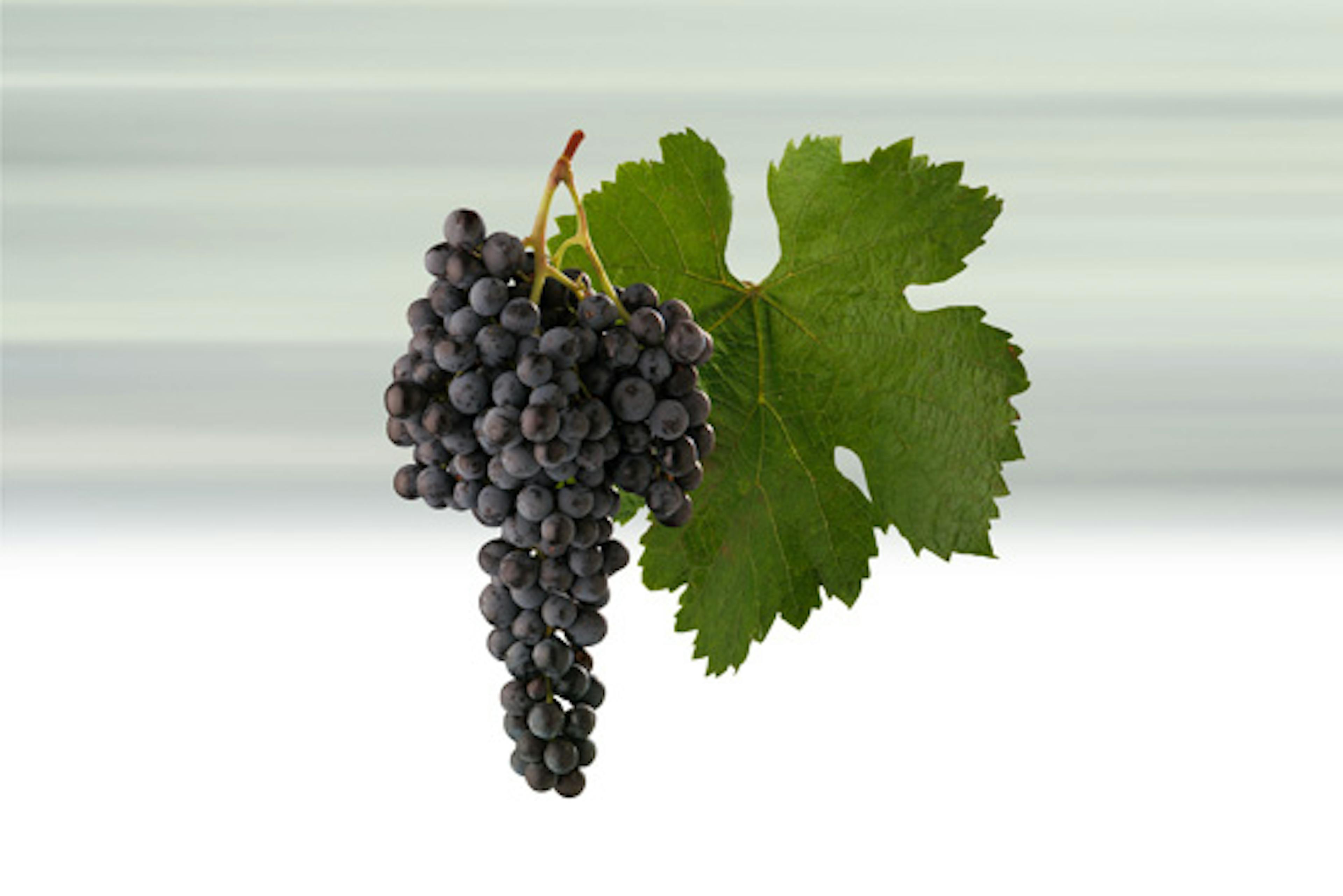Variety detail
Merlot Noir
Basic characteristics of wine
Merlot, čti „merló“, je významná odrůda pocházející z Francie, která je jednou z vůbec nejstarších odrůd na světě. U nás se pěstuje především na Moravě, nejvíce rozšířená je v Mikulovské a Slovácké podoblasti.
Colour
Tmavě rubínová až granátová.
Wine aroma
Po peckovém nebo lesním ovoci s jemnou stopou černého koření.
Taste
Vyznačuje se sametovostí, hebkostí a příjemnou strukturou s tóny kompotového ovoce. U starších vín nalezneme také tóny lanýžů nebo čokolády.
Food and wine pairing

Wine profile
About
Entered in the State Register of Grape Varieties in 2001.
Wines of Merlot are frequently of ruby to garnet colour, while its depth will depend on the yield.
Originally a French variety with genetic ties to Cabernet Franc, which has been planted in about 80,000 hectares in France and is still on the increase. Its wine is an integral part of the the red-wine region of Bordeaux, mainly in St. Emilion and Pomerol, where the world-renowned Château Pétrus is situated, whose vineyards of hard clayey soil rich in iron are planted almost exclusively with Merlot. During the last ten years this variety has spread rapidly not only in the southern French Languedoc region, but also in the rest of the world and nowadays the wines from Merlot enjoy immense popularity.
The name is derived from the French “merle” (blackbird), who loves to peck at the little berries in the large bunches of Merlot grapes, which are the first of all the black varieties cultivated in the Bordeaux region to take on colour. Wines from Merlot are excellent partners in blends with Cabernet Sauvignon because they are full-bodied and their softness has a moderating effect on the tannins of that variety and speeds up maturation. Previously Merlot was perceived as a grape variety of the second rank, however it has slowly been gaining respect while it has gradually been spreading its wings to Italy, California, Chile and even into eastern Europe. Its innate subtlety and pleasant drinkability has brought it many friends in the wine-loving world. In Hungary we come across Merlot under the title Médoc Noir.
Vines are of vigorous growth, having medium large, 3-5-lobed, light-green leaves. Grapes are medium to large, loose, on long stalks. Berries are small to medium, blueish-black, with thin skins, and are moderately spicy to taste. Resistance to frost and fungal diseases is medium to low. Ripening is medium late. Towards the end of ripening the sugar content increases rapidly while the acidity levels drop. It requires excellent positions in which it will be protected to a certain extent from winter frosts. It is suitable in light, warmed and drier soils which are also well drained.
Wines from the Bordeaux region use different percentages of each of the varieties permitted in the individual regions. Although Merlot is represented in 56% of the entire vineyard area, it is not used everywhere. The standard cuvée is Merlot, Cabernet Sauvignon, Cabernet Franc, with the possibility of adding Malbec and Petit Verdot. Merlot brings subtlety and roundness, Cabernet Franc the nose, while Cabernet Sauvignon gives backbone and necessary structure to the wine. On its own Merlot would be less long-lived. In wines from the the Médoc and Graves regions Merlot is usually only about 25% of the cuvée, while in St.Emilion it may be around 60%, the main ingredient being Cabernet Franc. In Pomerol, on the other hand, Merlot is usually 80% or even up to 95% of the blend. All depends very much not just on the climate, but even more on the soil composition. Soils of both the last mentioned regions are mainly hard and cool, which slows the ripening of Cabernet Sauvignon somewhat, which allows it to be planted on the gravelly soil of the Médoc.
Wines of Merlot are frequently of ruby to garnet colour, while its depth will depend on the yield. As it gives an abundant crop, it can often be found on sale as a light ruby wine with a grassy nose and bitter taste. But Merlot from good producers normally has a dark garnet appearance, a supple nose of over-ripe blackcurrants with a hint of black cherries, plums, and figs, and, after spending a long time in bottle, tones of tobacco, truffles, coffee or chocolate. The taste is marked by a lower level of acidity, suppleness and velvety smoothness. Wines are very light and pleasantly drinkable. Because of its excellent drinkability and smoothness the wines of Merlot have gained favour with those same consumers who dislike tannic and astringent red wines. The liking for Merlot has quickly spread to a great number of consumers across the USA. Merlot matures relatively fast in bottle and only first-rate winemakers manage to get their Merlots to last more than a few years. The Merlot grape is also used in many parts of the world in blends with other varieties other than Cabernet.
Wines of Merlot are good to drink on their own without food.
Wines of Merlot are good to drink on their own without food. They can be offered alongside a variety of fine patés, venison or wild-boar ragouts, veal kidneys, roasts, mature cheeses, and dishes based on tomatoes.
Basic characteristics of quality wines.
Dark ruby to garnet colouris typical for the variety, and its very attractive sweetish nose of dark cherry or compot which fills out as it matures to include plums, figs and, after bottle-ageing, notes of tobacco, coffee and truffles also makes it very attractive for the majority of consumers. The wines have a supple smoothness and are highly attractive with a long finish.
Translation © Helena & John Baker 2004





